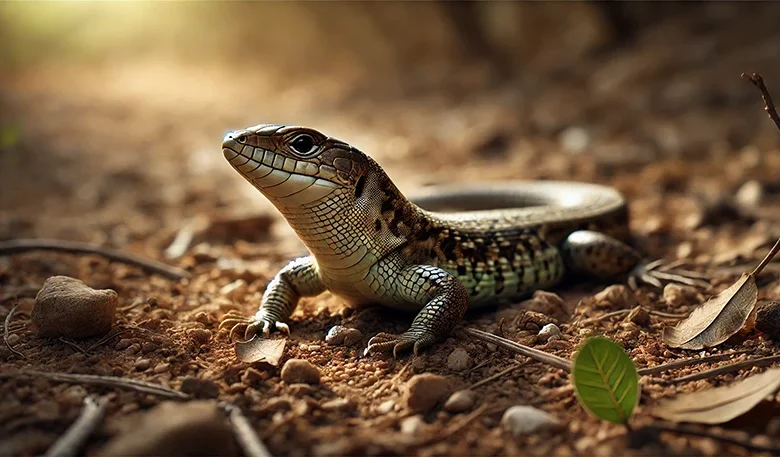Abòlò (Dominican Ground Lizard)

The Abòlò, or Dominican Ground Lizard (Ameiva fuscata), is an endemic species to Dominica and is integral to the island’s unique biodiversity. Historically, the Abòlò held cultural significance for the Kalinago (Carib) people, who traditionally used it in remedies. Scientifically described in 1887 by Samuel Garman, who studied specimens collected during the “Blake expeditions” by William Healy Dall, the Abòlò represents a fascinating example of Dominica’s natural heritage.
Abòlò’s Physical Description
Adult Abòlòs are distinguished by bright blue spots on their flanks and a gray or reddish-brown dorsal surface flecked with black. Males reach up to 200 mm in snout-vent length (SVL), while females grow to around 154 mm, both with tails of similar length. Juveniles are coppery-brown with distinct lateral stripes that fade as they mature. Their physical traits, like the males’ broader heads and jowls, make them unique among Caribbean reptiles. Still, juveniles are often mistaken for other lizards due to their smaller size and colouration.
Dominican Ground Lizard’s Habitat and Distribution
The Abòlò is primarily found in Dominica’s coastal woodlands and lower elevations, below 300 meters, but also adapt to higher altitudes as more forest land is cleared. The species thrives in dry coastal forests, cultivated lands, and littoral woodlands. With an estimated density of 379 individuals per hectare in coastal woodlands, Abòlòs contribute significantly to Dominica’s reptilian biomass, mainly due to the absence of the mongoose on Dominica, which has allowed native species to flourish.
Diet and Behavior
Omnivorous in diet, the Abòlò consumes fruits like mangoes, small invertebrates, and sometimes carrion, though it avoids eating its own species. Interestingly, it preys on eggs and hatchlings of the endangered Lesser Antillean Iguana. As heliothermic animals, Abòlòs are active during the hottest part of the day and often forage through leaf litter or climb trees up to 1.5 meters to hunt. Males reach reproductive maturity at around 94 mm SVL, and females at 105 mm, with reproduction occurring year-round, resulting in several clutches of approximately four eggs each.
Conservation Status
The Abòlò remains relatively secure due to Dominica’s lack of invasive predators; however, habitat fragmentation and pesticide use present threats. As agricultural expansion continues, particularly in bananas and tree crop plantations, habitat loss and increased pesticide use threaten this species’ well-being. Conservation efforts that limit forest clearing and regulate pesticide application could help protect the Abòlò and maintain Dominica’s ecological balance.




